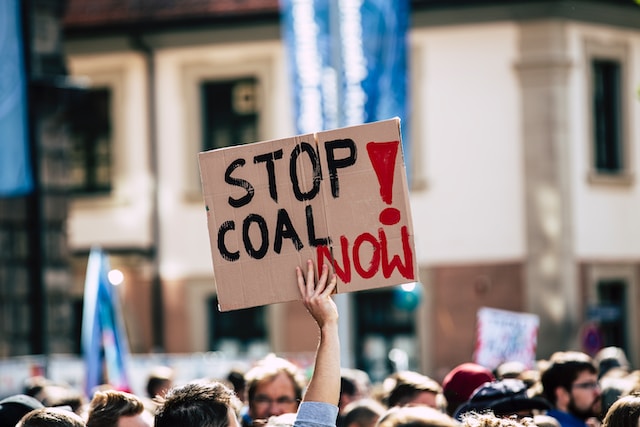
Environmental justice is a concept that has been gaining traction in recent years, as more and more people are beginning to recognize the disparities in environmental impact that exist between different communities. It is a movement that seeks to address these disparities and ensure that all people have equal access to a healthy environment.
The reality is that low-income communities and communities of color are often disproportionately affected by environmental hazards. They are more likely to be located near toxic waste sites, landfills, and other sources of pollution. They are more likely to suffer from health problems related to environmental exposure, and they are less likely to have access to resources that can help them mitigate these risks.
Understanding Environmental Justice
In order to address the disparities in environmental impact, it is crucial to have a clear understanding of what the concept entails. By exploring the key concepts and principles underlying this movement, we can begin to comprehend the urgency and importance of achieving environmental justice for all.
What is Environmental Justice?
Environmental justice revolves around the belief that no community should bear a disproportionate burden of environmental hazards due to social, economic, or racial factors. It centers on the idea of equality, demanding that every individual has the right to a clean and healthy environment, regardless of their background or socioeconomic status.
The roots of environmental justice can be traced back to the civil rights movement and the realization that environmental degradation is intimately interconnected with racial and economic inequality. It emerged in the late 20th century as marginalized communities began to fight against the injustices they faced as a result of environmental discrimination.
Principles of Environmental Justice
Equity and Fairness:
Environmental justice demands that all individuals, regardless of race, income, or location, have an equal right to environmental benefits and protection. It seeks to eliminate the disproportionate burdens experienced by marginalized communities.
Participatory Decision-Making:
Communities affected by environmental hazards must have the opportunity to actively participate in decisions that impact their environment. This principle promotes inclusivity and empowers individuals to have a say in policies, regulations, and projects that may affect their well-being.
Preventative Action:
Rather than solely reacting to environmental injustices after they occur, this principle emphasizes the importance of preventing harm in the first place. Proactive measures are needed to ensure equitable distribution of environmental benefits and equal protection against hazards.
Recognition of Cumulative Impacts:
Environmental justice recognizes that marginalized communities often face multiple environmental stressors simultaneously, such as air pollution, water contamination, and lack of green spaces. These cumulative impacts can exacerbate health disparities and further marginalize already vulnerable populations.
Solidarity and Collaboration:
Building strong networks and alliances among affected communities, activists, organizations, and policymakers is vital to advancing the cause. Through collective action and collaboration, the movement gains strength and the voices of marginalized communities are amplified.
Environmental Injustices and Disparities
In this section, we will delve into the environmental injustices and disparities that plague our society. These disparities have far-reaching consequences, impacting the health, well-being, and future prospects of marginalized communities. By shedding light on these issues, we hope to inspire action and foster a collective commitment to achieving environmental justice.
- Water Injustice
Access to clean and safe water is a fundamental human right, yet many marginalized communities face water injustice. These communities often find themselves grappling with contaminated water sources, inadequate infrastructure, and limited access to resources for water treatment. This disparity contributes to a host of health issues and hampers the basic dignity and well-being of affected individuals.

- Urban Heat Islands
Urban heat islands, characterized by significantly higher temperatures in urban areas compared to surrounding rural areas, disproportionately affect low-income neighborhoods. These areas often lack green spaces, tree canopies, and proper ventilation, exacerbating the heat and leading to adverse health outcomes such as heatstroke and respiratory issues.
- Food Deserts
Food deserts, characterized by limited access to affordable and nutritious food, disproportionately affect low-income communities. These areas lack grocery stores and farmers’ markets, making it challenging for residents to obtain fresh produce and healthy food options. The consequences of food deserts are manifold, including increased rates of diet-related diseases and limited opportunities for overall well-being.
- Environmental Racism
Environmental racism is a disturbing reality that adds another layer to the struggles faced by marginalized communities. These communities, primarily comprising people of color, are often subjected to increased exposure to environmental hazards due to discriminatory policies, redlining practices, and the placement of polluting industries in their neighborhoods. This systemic injustice perpetuates cycles of inequality and unfairly burdens certain communities with environmental risks.
Environmental Justice Advocacy and Movements
In the fight for environmental justice, passionate advocates and grassroots movements have emerged to amplify the voices of marginalized communities and demand change. These groups have galvanized support, raised awareness, and pushed for policies that prioritize the equitable distribution of environmental benefits and protections. Let us delve into some influential environmental justice advocacy and movements that have left an indelible mark on the pursuit of a fair and just environmental future.
The Environmental Justice Movement
The Environmental Justice Movement has been at the forefront of the fight for social and environmental equality. Emerging in the 1980s, this movement aimed to address the disproportionate burden of environmental hazards faced by marginalized communities. Led by inspiring activists, such as Dr. Robert Bullard, known as the “father of environmental justice,” the movement has focused on raising awareness, advocating for policy changes, and empowering affected communities.
Through powerful grassroots organizing, the Environmental Justice Movement has successfully brought attention to the complex issues surrounding environmental justice and illuminated the urgent need for transformative action.
Indigenous Rights and Environmental Justice
Indigenous peoples across the globe have long been at the forefront of environmental justice struggles. Their holistic and deeply rooted connection to the land has made them powerful advocates for preserving the environment and challenging the violations of their rights.
Movements like the Standing Rock protests against the Dakota Access Pipeline in the United States and the resistance of First Nations communities against destructive mining practices in Canada showcase the unwavering determination of indigenous peoples to protect their territories and fight for environmental justice.
These movements underscore the vital importance of centering indigenous knowledge, sovereignty, and consent in environmental decision-making processes.
Youth Activism

In recent years, youth activists have risen to the forefront of the environmental justice movement, demanding bold action to combat climate change and address the inequities faced by marginalized communities.
Inspired by the leadership of Greta Thunberg and the Fridays for Future movement, young people across the globe have been organizing school strikes, participating in climate marches, and using social media platforms to mobilize support and demand immediate change.
Their unwavering passion and commitment remind us that the fight for environmental justice is not just for the present generation but for the generations to come. Their voices serve as a powerful reminder that the future of our planet rests on our ability to address disparities and create a sustainable world for all.
Environmental Justice Laws and Policies
To rectify the long-standing environmental injustices faced by marginalized communities, governments have begun enacting laws and policies that seek to redress the imbalance.
The creation of the U.S. Environmental Protection Agency’s Office of Environmental Justice in 1992, for example, marked a significant step towards prioritizing environmental justice within governmental agencies. This office works towards addressing environmental concerns within communities disproportionately affected by pollution and implementing strategies to promote equity.
Internationally, the adoption of the 2030 Agenda for Sustainable Development by the United Nations has recognized the importance of environmental justice in achieving global sustainability. This framework calls for the inclusion of marginalized communities in decision-making processes and the promotion of sustainable development that leaves no one behind.
While these laws and policies are commendable steps in the right direction, their full implementation and the continued advocacy of affected communities will be essential to ensure their effectiveness.
The pursuit of environmental justice requires multifaceted approaches, from grassroots organizing to policy changes. The movements and advocacy discussed above represent just a few of the many efforts dedicated to achieving a fair and just environmental future. Each one contributes to an evolving narrative that recognizes the interdependence of social justice and environmental well-being.
As we continue to navigate the challenges posed by climate change and environmental degradation, let us draw inspiration from these movements and commit ourselves to the fight for environmental justice. Only through collective action, solidarity, and an unwavering commitment to equity can we build a sustainable future for all.


